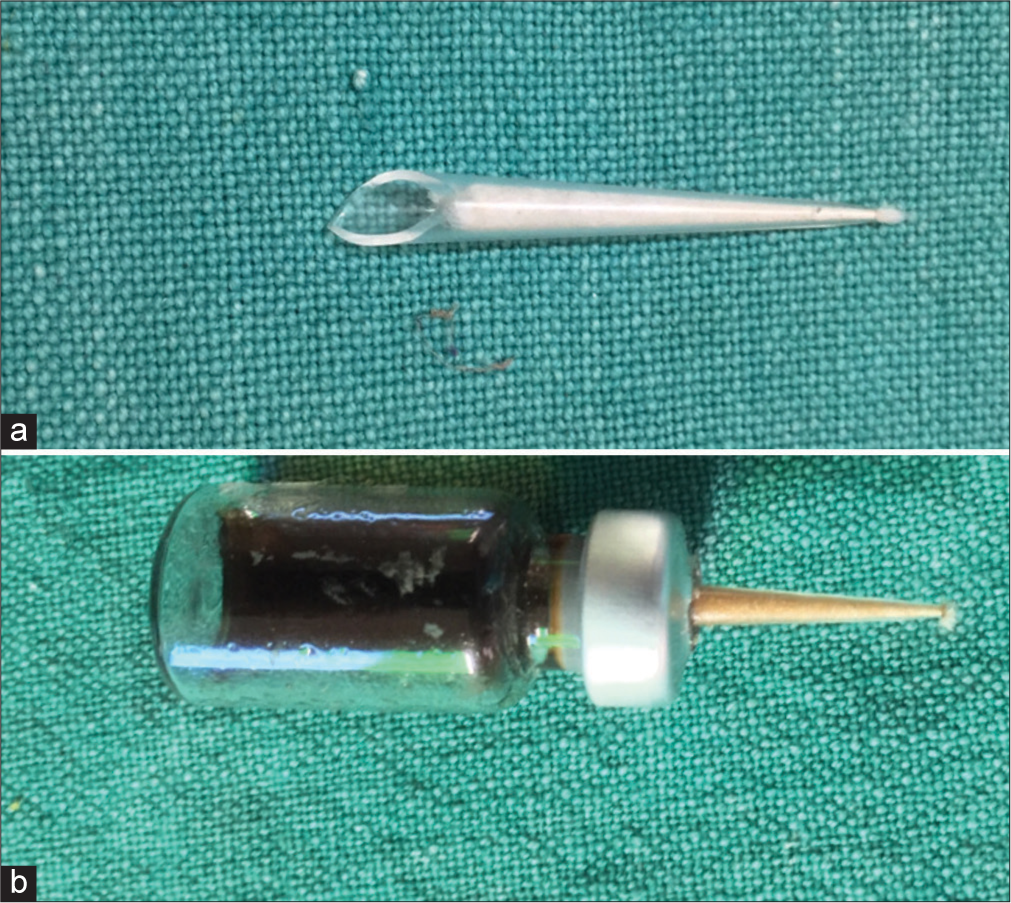Translate this page into:
Innovative probe of micropipette for glass vial for chemical cautery

*Corresponding author: Muhammed Mukhtar, Department of Dermatology, Mukhtar Skin Centre, Katihar, Bihar, India. drmmukhtar20@gmail.com
-
Received: ,
Accepted: ,
How to cite this article: Mukhtar M. Innovative probe of micropipette for glass vial for chemical cautery. CosmoDerma. 2024;4:62. doi: 10.25259/CSDM_58_2024
PROBLEM
Chemical cautery is a common procedure for treating superficial benign skin lesions. However, it may cause injury to the adjacent skin. A variety of advancements have been introduced to make disposable syringes safe for chemical cautery in clinics. Moreover, the micropipette and its device have been used, but are little expensive.[1] Chemicals cannot be kept in syringes for an extended period of time due to their corrosive effects on the syringe’s plastic and rubber components.[2] The glass container is chemically resistant in which refill pen polytube has been used, which has no pointed tip.[3] To reduce tissue harm during chemical cautery, the probe of the chemical vial has been redesigned for focused cauterization.
SOLUTION
To adapt the glass vial probe for chemical cautery, a micropipette tip was employed. First of all, the vial was rinsed with water with the help of a syringe and its needle for two to three times. Then the proximal wide end of the micropipette has been cut obliquely with a blade so that its cut end is pointed and penetrative enough to fit inside the vial. After that, the pipette tip was filled with cotton twigs to improve capillary action [Figure 1a]. Following that, the cap of the vial was penetrated with the pointed arms of small scissors, and then the cotton-filled probe was placed into the rubber cap of the chemically filled glass vial [Figure 1b]. The device is now ready for chemical cautery, and the probe can be capped with a disposable needle cap after cautery. It can be kept upright. Before cautery, place the device in the reverse upright position or horizontal position for 5 – 10 min to soak the probe’s cotton for better capillary action.

- (a) The modified micropipette probe for chemical glass vial. (b) The glass vial stuffed with micropipette probe.
The advantage of this device is that it is a chemically resistant container with no need for manual pressure, as it mainly works on capillary action.
Ethical approval
The Institutional Review Board approval is not required.
Declaration of patient consent
Patient’s consent was not required as there are no patients in this study.
Conflicts of interest
There are no conflicts of interest.
Use of artificial intelligence (AI)-assisted technology for manuscript preparation
The authors confirm that there was no use of artificial intelligence (AI)-assisted technology for assisting in the writing or editing of the manuscript and no images were manipulated using AI.
Financial support and sponsorship
Nil.
References
- A novel use of micropipette device is a better option for precise chemical cautery. J Cutan Aesthet Surg. 2023;16:351-2.
- [CrossRef] [PubMed] [Google Scholar]
- Disposable syringe for chemical cautery. J Am Acad Dermatol. 2022;86:e93-5.
- [CrossRef] [PubMed] [Google Scholar]





